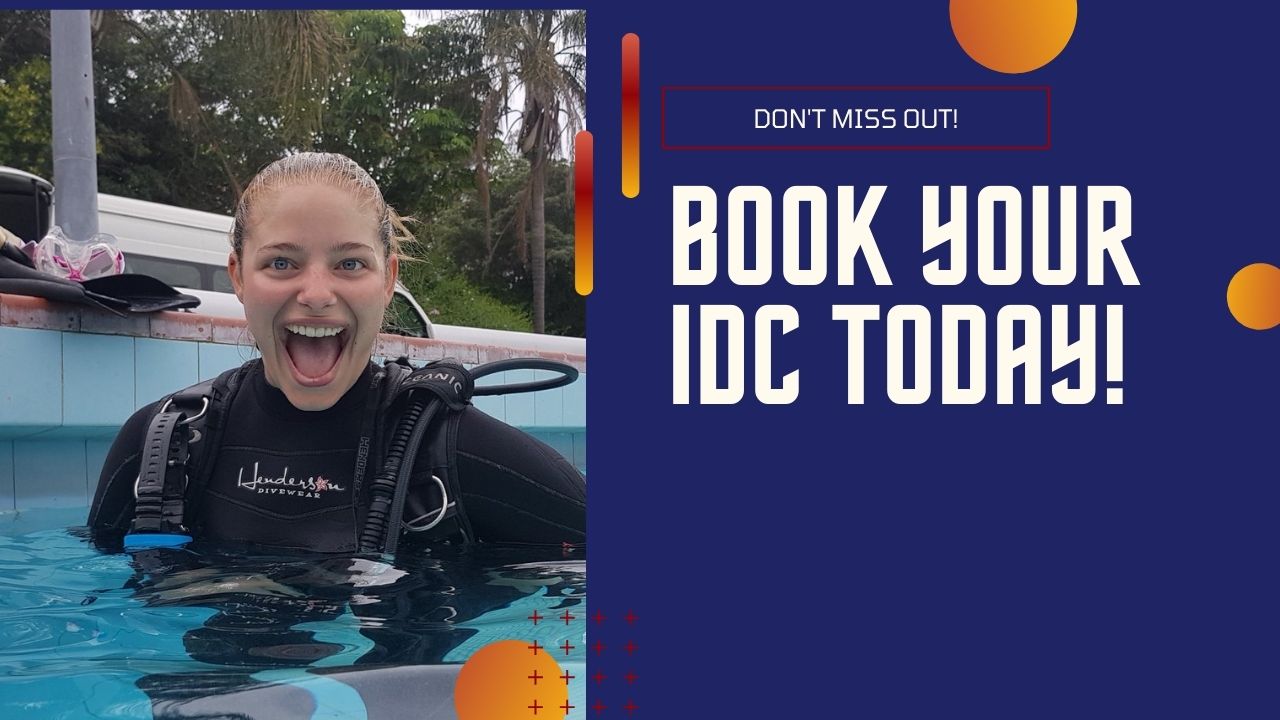You have 0 product(s) in your cart.
Abyss Scuba Diving
Becoming A Dive Instructor: Your Ultimate Guide To Certification And Career Success
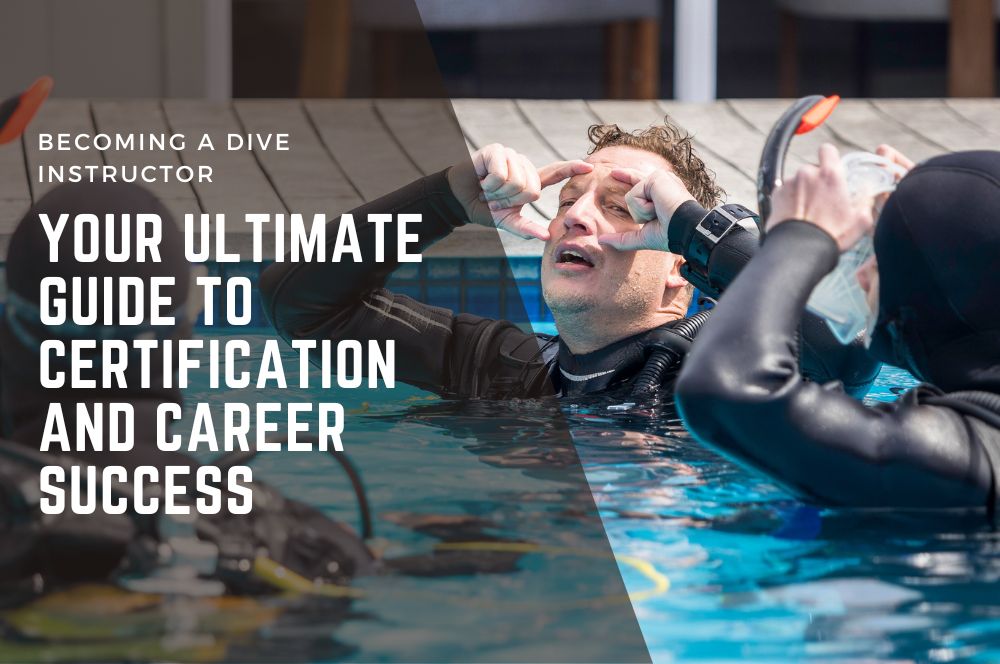
Becoming a Dive Instructor: Your Ultimate Guide to Certification and Career Success
To become a dive instructor, you must complete the PADI Instructor Development Course (IDC) and pass the PADI Instructor Examination (IE). This article navigates you through the journey of certification and the rewarding career that follows. Learn about the prerequisites, the training involved, and the diverse opportunities that certified dive instructors can explore worldwide.
Key Takeaways
-
Becoming a PADI Dive Instructor involves extensive training culminating in the Instructor Examination (IE), requires meeting specific prerequisites including minimum dive experience, and offers an exciting lifestyle transformation with global career opportunities.
-
Certified instructors play a pivotal role in educating new divers, contributing to marine conservation, and can travel the world while working in diverse environments, whether on liveaboards, cruise ships, or exotic locales.
-
Successful dive instructors need to have excellent communication, teaching, safety, and risk management skills, and should engage in continuous professional development to stay current and expand career prospects.
The Path to Becoming a PADI Dive Instructor
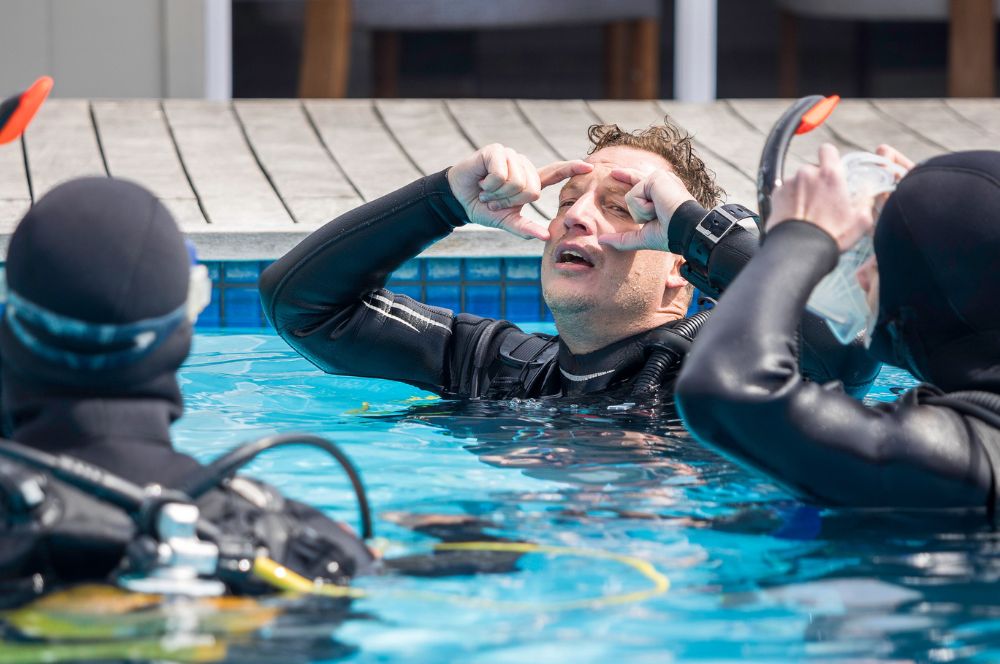
Becoming a PADI Dive Instructor is more than just a career change; it’s a lifestyle transformation. The journey to becoming a certified instructor is as exciting as it is rewarding. It all begins with earning the PADI Divemaster rating or an equivalent from another certification organization. The next crucial step is the globally recognized PADI Instructor Development Course (IDC), revered as the leading scuba diving instructor course worldwide.
Typically, completing the PADI IDC takes between 10 to 14 days. This intensive training period is followed by the Instructor Examination (IE), after which successful candidates can officially become certified instructors, ready to open up the underwater world to new divers. But before you embark on this journey, it’s crucial to understand what preparing for the IDC entails.
Preparing for the PADI Instructor Development Course (IDC)
Stepping into the world of professional diving with the PADI IDC requires meeting certain prerequisites. Candidates must:
-
Be at least 18 years old
-
Have been certified divers for at least six months
-
Complete Emergency First Response Primary and Secondary Care training within the past 24 months
-
Have a signed medical statement from a physician within the last 12 months
Furthermore, a minimum of 60 logged dives is required for enrollment in the PADI IDC, with 100 dives needed to attend an Instructor Examination (IE). If you’re not already a PADI Divemaster, passing the PADI Divemaster course diver rescue skills assessment is a must. Additionally, an Emergency First Response Instructor rating must be obtained during the instructor training period, which is led by experienced padi dive instructors. Obtaining your padi instructor certification is a crucial step in becoming a professional in the diving industry.
With these prerequisites in place, you’re ready to dive into the IDC experience.
The PADI IDC Experience
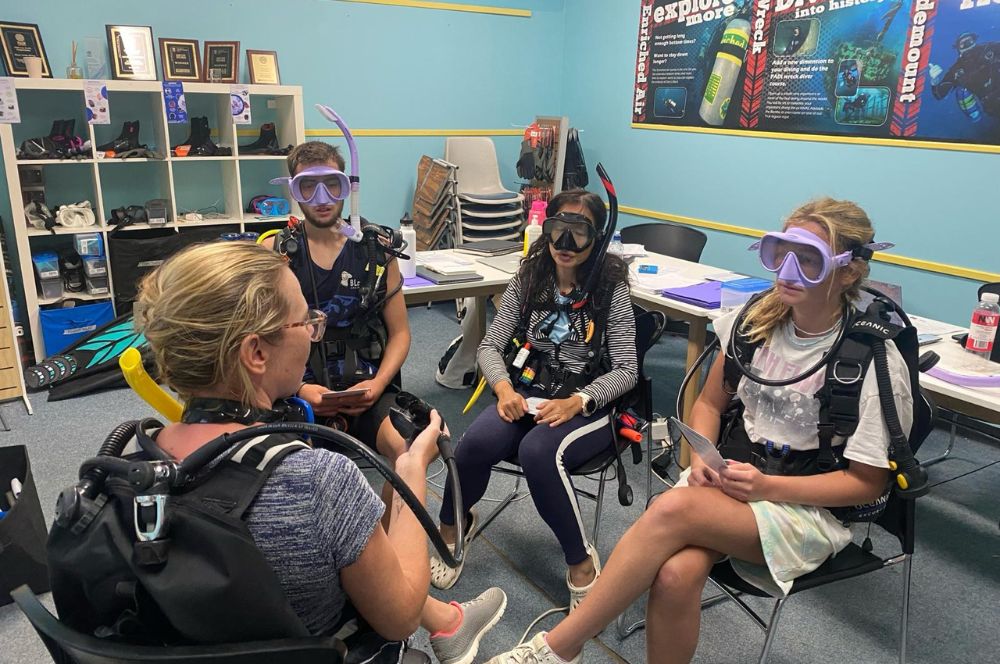
The PADI IDC is a comprehensive training program designed to transform dive enthusiasts into competent dive professionals everywhere. The training program consists of two main parts. Firstly, the PADI Assistant Instructor (AI) course, followed by the Open Water Scuba Instructor (OWSI) program. Throughout the course, candidates engage in a range of workshops covering various areas such as the PADI system, dive theory, confined and open water training, and specialized courses like Discover Scuba Diving and Advanced Open Water.
The IDC isn’t just about theory and tests. It’s about immersing candidates in real-world scenarios, including pre-assessment exams, skill development, and teaching presentations in both confined and open water settings. This hands-on approach diver educationhelps perfect demonstration-quality personal diving skills and gain practical teaching experience.
Moreover, the IDC curriculum revolves around:
-
Developing a deep understanding of the PADI philosophy
-
An in-depth knowledge of PADI standards
-
Adapting to the specific dive environment where the course takes place
With this extensive training, you’re now ready to face the padi instructor exam, also known as the PADI Instructor Examination (IE).
Passing the PADI Instructor Examination (IE)
The final hurdle in your journey to becoming a PADI Dive Instructor is the Instructor Examination (IE). This requires you to have been a certified diver for at least six months and have a minimum of 100 logged dives. Spanning two days, the IE includes four main segments: written exams, classroom presentation, confined water teaching, and open water teaching.
During the IE, your dive theory knowledge, understanding of PADI standards, teaching ability in different settings, and professional conduct in line with PADI’s principles will be tested. And if you don’t pass all segments on your first try, don’t worry. Candidates may retake any failed portions of the IE, subject to additional fees for each segment retaken.
With the IE completed successfully, you’re now a certified dive instructor, ready to embark on a rewarding career. And speaking of careers, let’s explore your potential career opportunities as a diving instructor.
Diving Instructor Career Opportunities
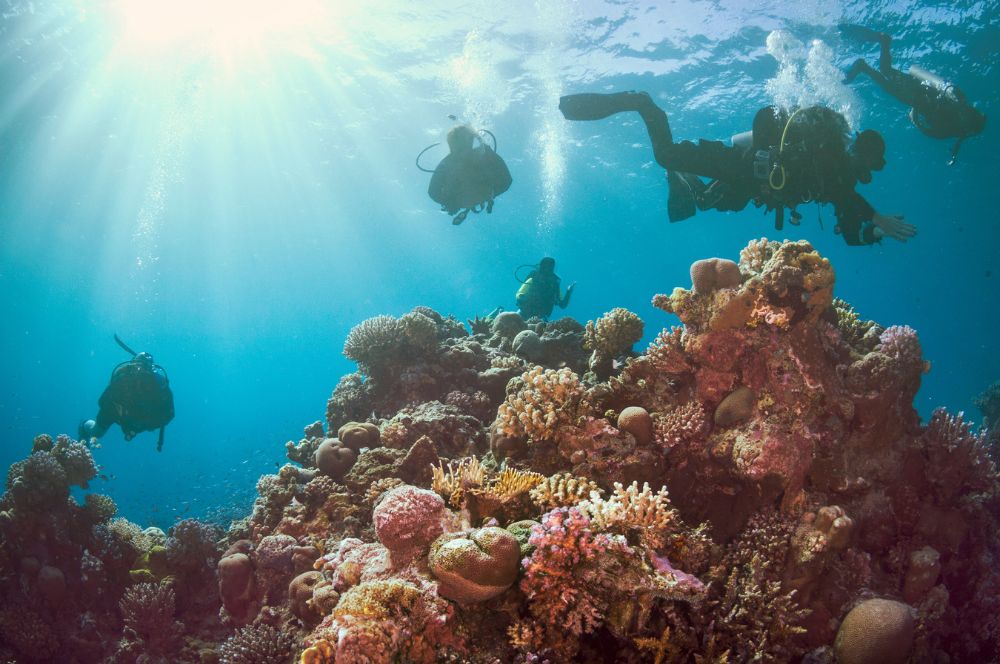
Becoming a PADI Dive Instructor opens up a world of global career opportunities. You can work at dive centers, resorts, and even on liveaboards in various locations around the world. Your journey as a dive instructor can take you anywhere from the vibrant reefs of Australia to the historical shipwrecks in the Mediterranean.
The diving career paths available to you are as diverse as the marine life you’ll encounter. They include teaching new divers, engaging in marine conservation and research, and specializing in areas like underwater archaeology. However, it’s important to note that the demand for diving instructors can often be influenced by the seasonal trends of tourism, which can determine job availability in different regions.
Let’s dive deeper into these career opportunities.
Teaching and Training New Divers
As a master scuba diver trainer, one of your primary roles will be teaching and training new divers. You’ll be responsible for developing their confidence, helping them overcome their fears, and allowing them to savor the excitement of their first underwater breath. You’ll have the opportunity to teach a wide array of PADI courses, from beginner to advanced levels, and including various specialty certifications.
Creating a welcoming atmosphere for learning is a significant part of an instructor’s role. By making the diving experience enjoyable and social, you can enhance the overall experience for your students. And of course, following PADI standards is crucial as it enables you to provide structured, effective training that prioritizes safety and yields competent divers.
Working in Marine Conservation and Research
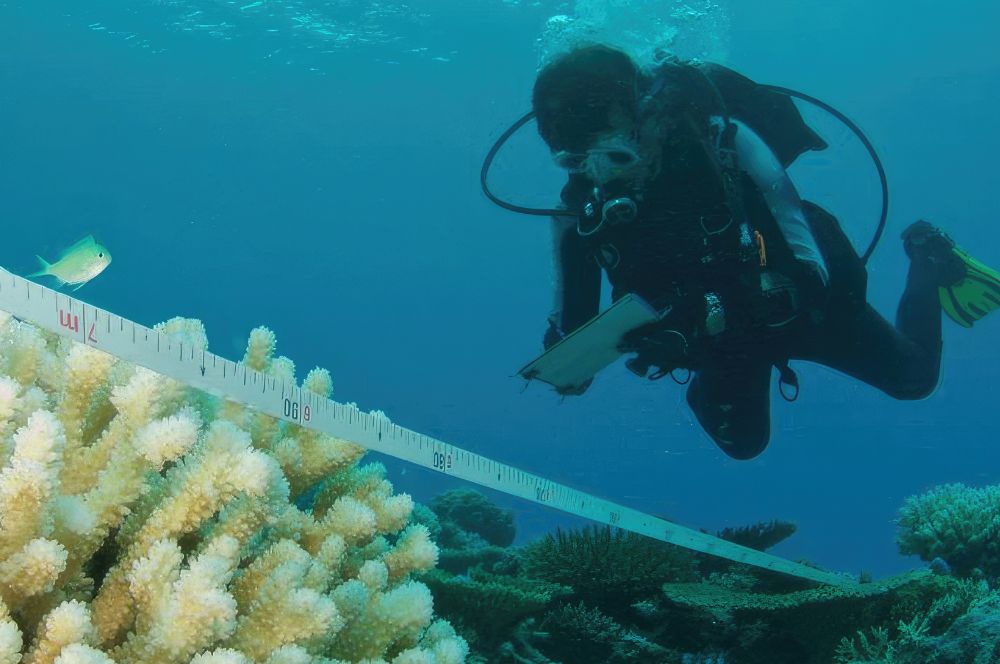
As a PADI Dive Instructor, you can also play a significant role in marine conservation and research. You’ll act as an ambassador for the oceans, educating students on marine life and advocating for ocean conservation. You can empower student divers to be conservation leaders by teaching PADI marine resource management courses that cover in-depth marine ecology.
Moreover, your commitment to responsible diving practices can include:
-
Providing students with environmental education
-
Promoting respectful interactions with marine life
-
Leading divers in research activities as part of citizen science projects
-
Assisting marine biologists by conducting underwater surveys and contributing data to scientific studies
Travel and Adventure
Finally, as a PADI Dive Instructor, you’ll have the opportunity to combine your career with your love for travel and adventure. You could find yourself working in some of the most popular and beautiful dive destinations in the world, such as:
-
Thailand
-
Maldives
-
Australia
-
Indonesia
-
Malaysia
-
Hawaii
-
Pacific Islands
-
Mexico
Besides, you might work in a variety of settings, including aboard cruise ships, at island resorts, dive shops, or even on film sets for underwater shoots. Becoming a scuba diving instructor offers the chance for long-term travel, exploring underwater environments globally, and experiencing various cultures while meeting recreational scuba divers and new people.
Freelancing as a dive instructor provides the flexibility to travel and work in different locations, and you may even be eligible for work visas in countries where diving is an integral part of the tourism industry.
Essential Skills for Successful Dive Instructors
.jpg)
To thrive in this exciting career path, you’ll need more than just a passion for diving. A successful dive instructor possesses a unique set of skills. They must be able to communicate complex concepts in a clear and accessible manner to students of varying levels of experience and understanding. Giving concise and clear instructions, both verbally and through dive signals underwater, is essential for safety and effective learning.
Moreover, providing constructive feedback and actively listening to student concerns is vital for enhancing learning outcomes and dealing with any problems that may arise. Adaptability, professionalism, and flexibility are also key attributes that a dive instructor must possess, [Fact 3_4], [Fact 3_5]].
Communication and Teaching Techniques
Effective communication skills are at the heart of a successful diving instructor’s toolkit. They ensure that students understand dive concepts and procedures, setting them up for a safe and enjoyable diving experience. As an instructor, you must be able to:
-
Adapt your teaching methods to suit individual students’ learning styles and needs
-
Prepare for common problems
-
Develop exercises and games that cater to different capabilities
These skills will help you create a positive and effective learning environment for your students.
Being a good teacher involves several important qualities:
-
Confidence and reassurance to help students feel at ease
-
Understanding and responding to students’ body language to enhance their learning experience
-
Patience when students struggle with performance requirements, allowing you to address their needs effectively
Remember, learning should be fun, enjoyable, and social to enhance the overall experience for your students.
Safety and Risk Management
Safety is paramount in diving, and as an instructor, you are responsible for teaching and enforcing safety protocols to minimize risks during dives. This includes:
-
Assessing environmental conditions
-
Ensuring that students are aware of potential hazards
-
Regularly practicing and teaching emergency skills, such as air-sharing ascents and regulator free-flow breathing
These measures are essential for maintaining diver safety in a diving environment.
Furthermore, conducting risk assessments is crucial, considering factors like:
-
depth
-
visibility
-
currents
-
marine life
-
weather conditions
-
diver fitness
This should tie into a broader understanding that emergencies are a matter of ‘when’, not ‘if’. Developing a grading system to prioritize risks based on severity and likelihood, and establishing risk control measures like contingency plans, are all integral parts of risk management.
Continuous Professional Development
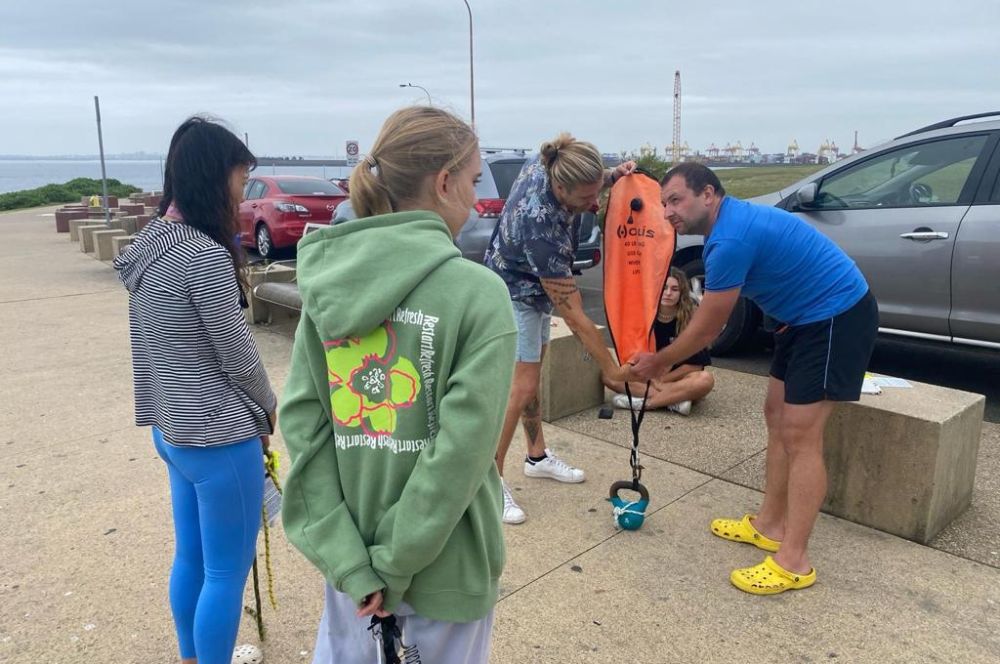
As with any career, continuous professional development is key to staying at the top of your game as a dive instructor. This could involve specializing in technical diving instruction or pursuing further certifications and specialties to broaden your teaching repertoire. Instructor marketing diving skills can also be an essential aspect of your professional growth, helping you to attract more students and increase your income.
Staying current with the latest dive techniques, safety standards, and PADI’s instructor-level continuing education programs is also crucial. And don’t forget the value of learning from your peers: team teaching with experienced instructors can provide valuable insights, and providing mentorship to divemasters and assistant instructors can foster a supportive learning environment.
Plus, teaching programs like Project Aware and Reef Check Eco Diver can turn you into an ambassador for marine conservation, integrating environmental education into your professional development.
Choosing the Right Dive Instructor Course
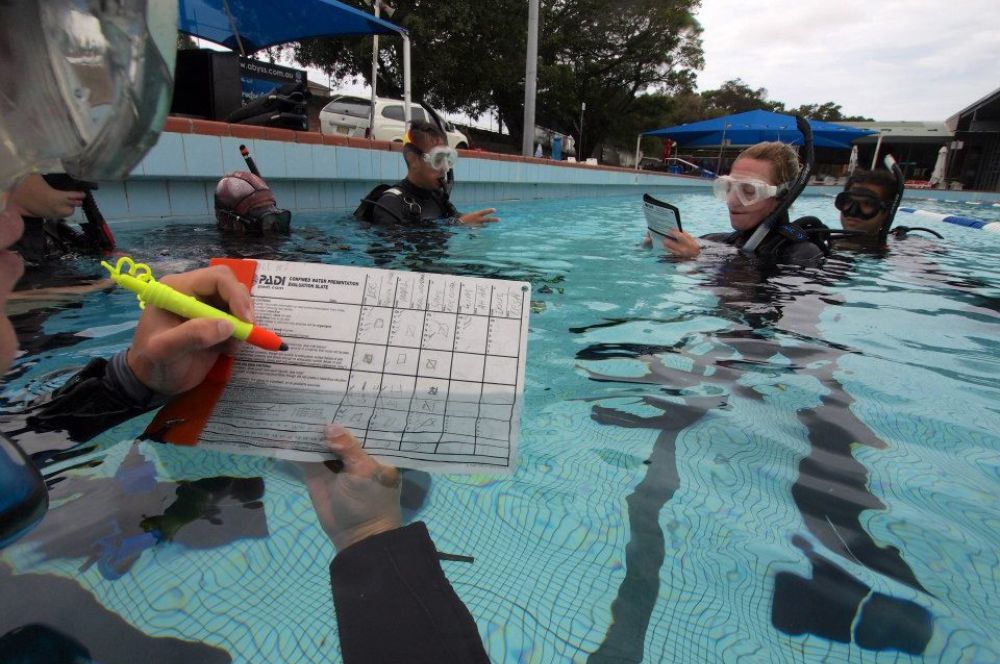
Choosing the right PADI instructor development courses is a critical step in your journey towards becoming a PADI Dive Instructor. It’s important to ensure that the dive center is a PADI 5 Star Instructor Development Center, as this guarantees high training standards. Researching the experience and credentials of the course directors can also provide an indication of the quality of instruction you’ll receive.
A good IDC should have a comprehensive curriculum covering dive theory, PADI standards, risk management, and teaching techniques. You should also consider IDCs from a dive centre that certifies a large number of recreational divers and offers a wide range of continuing education courses. This will help prepare you for real-world teaching conditions. Let’s dive deeper into these factors and how to compare different IDC programs.
Factors to Consider
When choosing an IDC, it’s crucial to consider the accreditation of the dive center. A PADI 5 Star IDC Center ensures quality education and enhances your future job prospects. The expertise and quality of the instructions provided by experienced course directors are also key considerations. For instance, Abyss Scuba Diving features three PADI Course Directors, allowing them to maximize support for IDC candidates.
Beyond the course directors, the facilities also play a significant role. State-of-the-art facilities, including modern classrooms and access to various dive sites, create an ideal learning environment that is conducive to your professional growth. It’s in these facilities where you’ll embark on your journey of becoming a dive instructor.
Comparing PADI IDC Programs
When comparing different PADI IDC programs, there are several factors to consider. First, the accreditation of the dive center, particularly as a PADI 5 Star IDC Center, is fundamental for ensuring quality education that aligns with industry standards. The expertise and quality of instructions provided by experienced course directors, such as those at Abyss Scuba Diving, are also key.
Look for state-of-the-art facilities, including modern classrooms and access to various dive sites, which create an ideal learning environment. An extensive curriculum covering dive theory, PADI standards, and teaching techniques is a hallmark of a superior IDC program.
Finally, prospective IDC students can verify a program’s reputation by checking the instructor’s standing with PADI using the PADI Pro Chek™ tool and by evaluating reviews and testimonials from former students. With these considerations in mind, you’re now ready to step into the professional world of diving.
Tips for Finding Dive Instructor Jobs

Once you’re a certified PADI Dive Instructor, the next step is to find a job. This entails understanding the employment laws of the country you’re applying to work in as a dive instructor. While this may seem daunting, there are several strategies you can use to increase your chances of landing your dream job.
This includes building a professional network, creating a strong resume and portfolio, and honing your interview techniques. Let’s explore these strategies in more detail.
Building Your Professional Network
Building a professional network is crucial in the diving industry. The PADI IDC provides not only training but also valuable professional career advice, job referral opportunities, and networking with diving industry professionals. Attending diving industry events and conferences is another effective way to network, allowing you to meet fellow professionals, learn about the latest industry practices, and connect with potential employers.
Utilizing social media platforms, particularly LinkedIn, is another effective way to build your professional network. By connecting with industry peers, participating in relevant groups, and discovering job opportunities, you can extend your reach within the diving industry.
Creating a Strong Resume and Portfolio
Creating a strong resume and portfolio is another crucial step in finding a job as a dive instructor. Tailor your diving resume according to the job role by highlighting relevant certifications, qualifications, and dive experiences, such as underwater photography or deep-sea diving. Personalizing your resume for each application can make a significant impact in the competitive diving job market.
An online portfolio displaying diving photos, videos, special projects, and a full list of certifications and achievements serves as a comprehensive visual representation for potential employers. It’s also beneficial to have a well-prepared physical CV, business cards, and a local registered mobile phone number to facilitate better contact with potential employers and leave a lasting impression.
Interview Tips and Techniques
Once you’ve secured an interview, it’s crucial to make a positive first impression. This includes being courteous to administrative staff or receptionists at dive centers, as they can often influence hiring decisions. During the interview, articulating a clear and comprehensive dive plan, emphasizing safety, communication, and environmental considerations, can showcase your professional competence.
Describing previous challenging diving experiences and how you managed them can demonstrate your problem-solving skills and ability to remain calm under pressure. Mentioning a strong work ethic and the ability to work well in a team, backed by references, can also leave a positive impression on potential employers. Finally, displaying a willingness to work on a trial basis can demonstrate your dedication and be appealing to dive centers with tight profit margins.
Summary
In conclusion, becoming a PADI Dive Instructor is not just about acquiring a new profession, it’s about embracing an entirely new lifestyle filled with adventure, discovery, and the joy of sharing your passion with others. From understanding the prerequisites to acing the PADI IDC and IE, there’s a lot to learn and master. But with the right guidance, dedication, and a passion for the underwater world, you can turn your dreams of becoming a dive instructor into a reality.
Frequently Asked Questions
How do I become a diving instructor?
To become a diving instructor, you should first be certified as a diver for at least six months and have a minimum of sixty logged dives, including experience in night, deep, and navigation diving. Additionally, you'll need to have proof of CPR and First Aid training within the last 24 months. Good luck with your journey!
How much do diving instructors get paid in Australia?
In Australia, the average salary for a scuba diving instructor is around AUD $64,000 per year, but it can vary based on factors like experience and location. It could also depend on the type of dive center they work for.
Can you make money as a dive instructor?
Yes, you can make money as a dive instructor, but the amount varies depending on how many students you teach and the location. Some instructors make very good money while others may not. Keep pursuing your passion!
What are the prerequisites for the PADI IDC?
To be eligible for the PADI IDC, you need to be at least 18 years old, have been a certified diver for at least six months, have a minimum of 60 logged dives, completed Emergency First Response Primary and Secondary Care training in the past 24 months, and have a medical statement signed by a physician within the last 12 months. These are the prerequisites for the PADI IDC.
What does the PADI IDC involve?
The PADI IDC involves workshops, real-world scenarios, pre-assessment exams, skill development, and teaching presentations in confined and open water settings, providing a comprehensive training experience.
Diving Career Related Posts
-
Maximize Career Potential with Recreational…
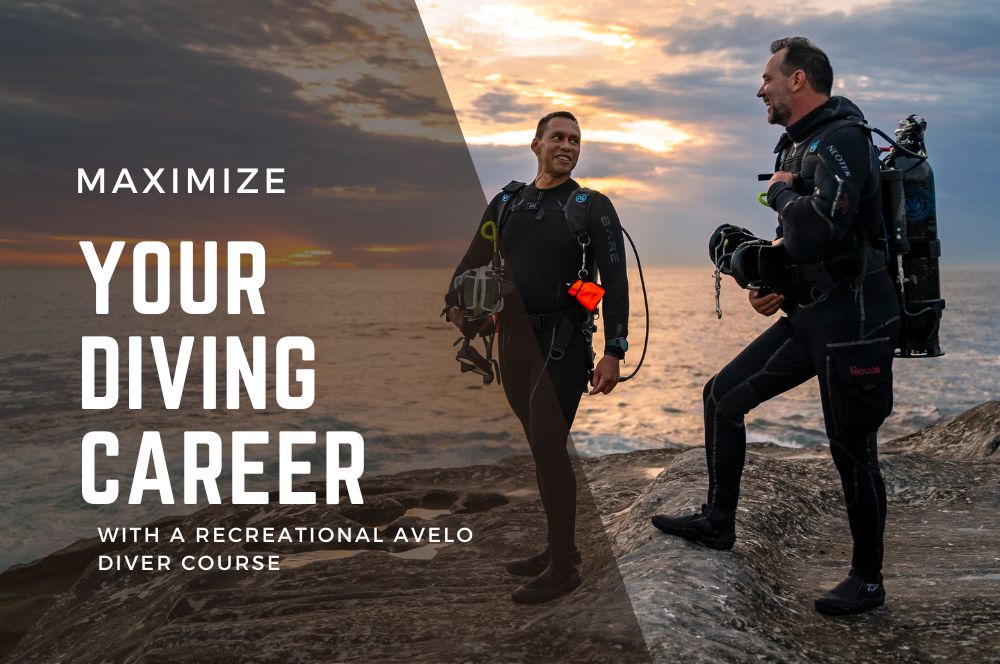
Maximize Career Potential…
Maximize Your Diving Career Potential with the Recreational Avelo Diver Course Today signifies a groundbreaking […] -
Diving Into a Career: Opportunities…

Diving Into a Career:…
Exploring the Benefits of a Career in Diving: A Look at Diver Jobs Imagine a career that combines the thrill […] -
Unravel the AHCLPW307 Scientific Diver…
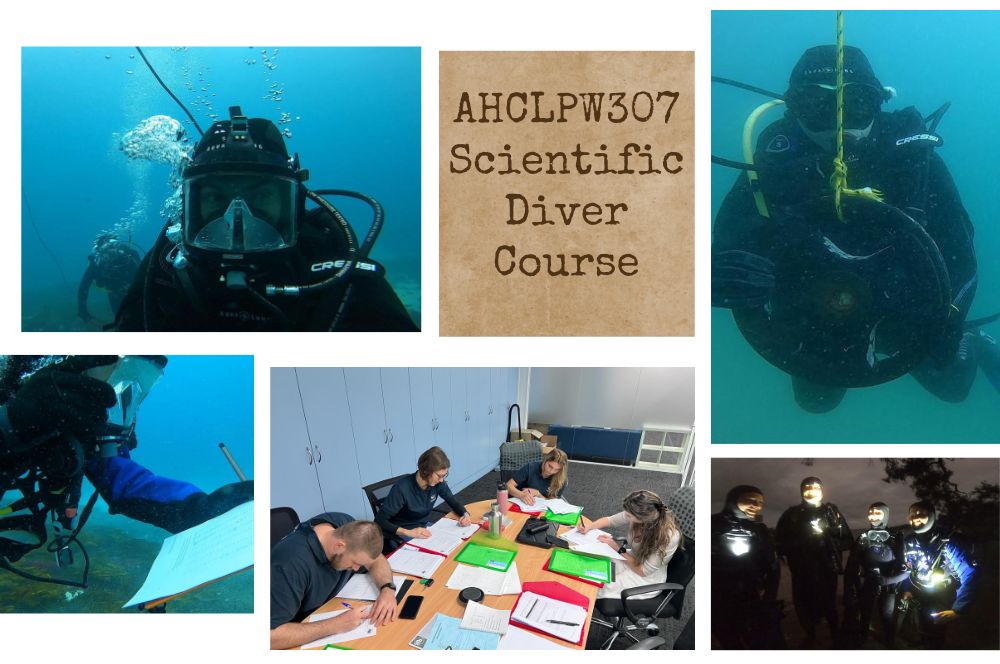
Unravel the AHCLPW307…
Unlocking the Secrets of AHCLPW307: Perform restricted diving for scientific purposes. Have you ever wondered […] -
Building Your Diving Resume: How to…
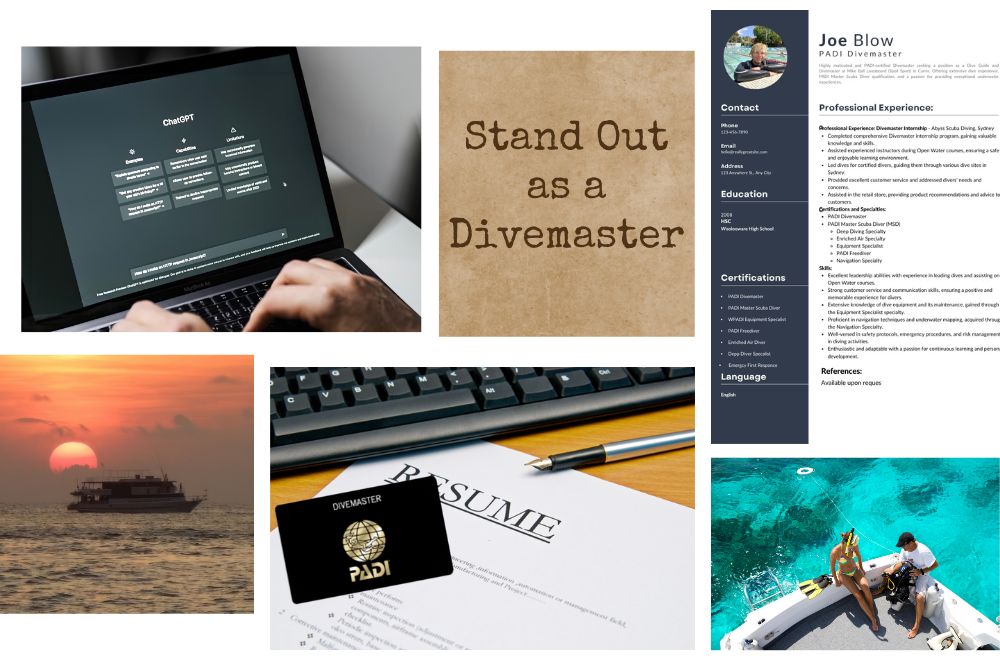
Building Your Diving…
Building Your Diving Resume: How to Stand Out as a Divemaster If you're an aspiring dive professional or […]
Recent Posts
